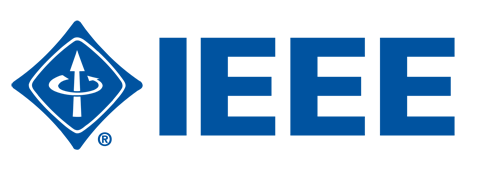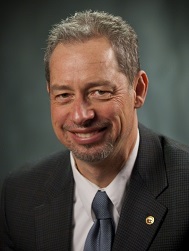
Reliability Society Newsletter

Vol. 62, No. 1, February 2016
Front page:
Society Events and Announcements:
Members & Chapters:
Dallas Chapter Activities:
Technical Seminar on Data Acquisition and Computation of Big Sensory Data
Members of Dallas Chapter Received Award from IEEE Dallas Section
Taipei/Tainan Chapter Activities:
Society President Christian Hansen Visited National Chiao Tung University
Prof. David Basin of ETH Giving a Talk at Taipei/Tainan Chapter
Links:
President's Message
 Dear Reliability Society Member,
Dear Reliability Society Member,
Having served now for over two years as President of the Reliability Society (RS) and as a society member for over 25 years, I have been asked more than a few times the question: So what is that you do in this Reliability Society? Knowing that this question comes up frequently, I am always prepared to quote our society Field of Interest (FOI) statement or give an "elevator speech" that describes in less technical terms what it is that we, the RS members, do. Many such spontaneous conversations actually do take place in hotel elevators.
Today more than 400,000 people are members of the IEEE. Describing IEEE to the occasional person who have never heard of this organization, is usually straight forward to do in 30 seconds or less. Everyone knows what an electrical or electronics engineer is, and it is also easy to describe how today IEEE membership have expanded to include a much broader scope of professionals ranging from computer scientists, semiconductor physicists, technology writers and many more. But only about 2,000 of IEEE's members are also members of the RS, which amounts to only about one half of a percent. So this begs the question: Is reliability only important to a half of a percent of the world's engineers and technology professionals? If the answer was yes, then this would be in deep contrast to what you experience when you read most companies' advertising materials. All major companies, including automobile, airplane, computer and cell phone manufacturers all want to sell their product as "more reliable" than that of their competitors. Reliability is what drives business. Companies that have reliability stay alive, those that don't eventually go out of business.
So what exactly sets a reliability engineer apart from the stereotypical engineer? Is the reliability engineer just the last person on the assembly line that adds reliability to the product before it gets packaged and shipped? Well, not exactly. In fact, today there are few, if any at all, companies that hire reliability engineers that do not have some other specialty relevant to the line of business they work in. I would go as far as saying that every engineer involved in building any product has to be a reliability engineer on top of his or her other engineering specialty. Reliability has to be part of every step of the design, development and manufacturing of a product from the early concept brainstorming to the final pre-shipment testing. Reliability can NOT simply be added at the end. So if I am correct, then every engineer and technology professional should understand how reliability is achieved through their specialty and every member of IEEE should also be a member of the RS.
As a member of the RS, I assume that you consider yourself as a reliability engineer or closely related technology professional. If you are a typical RS member, you probably have at least one other professional area of expertise and perhaps you are a member of at least one other IEEE society. You have made a good choice. Reliability is what makes you successful in your job and attractive and marketable if you are considering a career move. The next time someone asks you about your membership in the Reliability Society, make sure you have your elevator speech prepared. Direct your colleagues to visit our website rs.ieee.org for an overview of our Field of Interest, information about the many publications and conferences we sponsor or co-sponsor, and to learn more about how we are working towards integrating reliability into every other engineering profession. Join our LinkedIn group or one of our many technical communities and share your knowledge about what you are doing to make reliability part of your profession.
Christian K. Hansen, PhD
2016 Reliability Society President
From the Editor
This is the first issue of the newsletter for 2016 and my first issue as the new editor. I have had this position before and issued the newsletter in the 2004 to 2009 time frame. However, today's newsletter is much different than it was then. We had just transitioned from hardcopy to on-line issues and it was still in transition and had many growing pains. The newsletter today is more mature and has better capability to provide the members information.
I'm excited to be back as editor as there are many news items and activities to report. The society presented annual awards in January and I am compiling a report on these for the next newsletter. There are many chapters with activities to report. The chapter outreach event reports provide insight into some of these activities, particularly with new chapters in China. I also expect general topic Letters in Reliability articles in future newsletters.
Inputs for future newsletter issues are due in the following deadlines for input. Technical bulletins in our field of interest, committee announcements, Chapter activities, conference call for papers, etc are needed for the newsletter.
- Issue #1, inputs due Feb 1
- Issue #2, inputs due May 1
- Issue #3, inputs due Aug 1
- Issue #4, inputs due Nov 1
I look forward to communicating society information in our topics of interest with our membership. The Newsletter is only as good as the inputs provided, so please help bring our members an outstanding Newsletter. As always, feedback and suggestions for improvement are welcome.
Lon Chase
2016 Newsletter Editor-in-Chief
l.chase@ieee.org
The content is this publication is protected by all applicable copyright laws. Links to this website from commercial websites is permitted and encouraged, however, content may not be copied without use of proper citation.
(c) 2016 IEEE Reliability Society